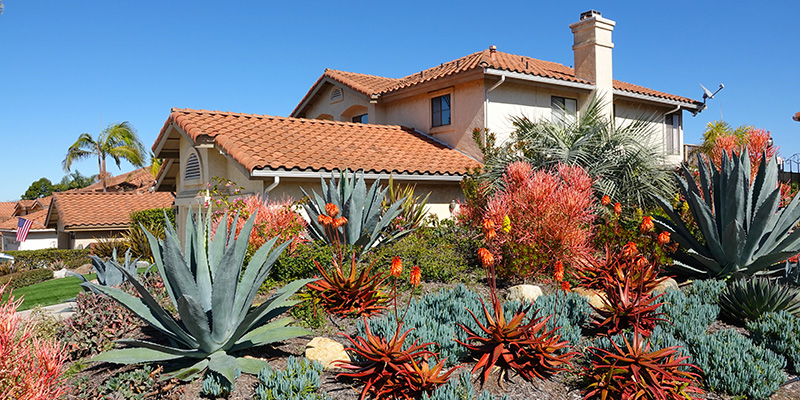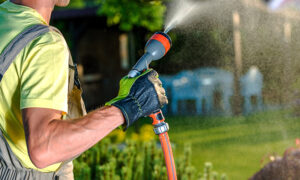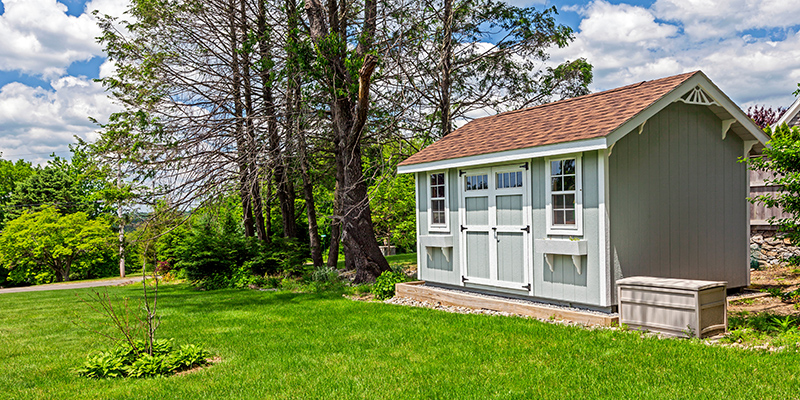Xeriscaping In HOAs: Something The Board Should Think About

Landscaping is an important part of every homeowners association. But, if you're having problems with maintenance and water, there is an alternative: xeriscaping. Here's what you need to know about xeriscaping in HOAs.
Browse By Category
Sign up for Our Newsletter
Landscaping is an important part of every homeowners association. But, if you’re having problems with maintenance and water, there is an alternative: xeriscaping. Here’s what you need to know about xeriscaping in HOAs.
What Is Xeriscaping in HOAs?
Xeriscaping is the art of designing and arranging landscapes to minimize or completely eliminate the need for irrigation. The idea is to use natural materials and plants that don’t require a lot of water to maintain. A xeriscaped landscape only needs the natural climate. Because xeriscaping does not require water, it is a popular practice in the drier areas of the United States.
The Benefits of Xeriscaping in HOAs
In homeowners associations, landscaping plays a critical role in curb appeal. Associations make it a point to have proper landscaping in common areas, leaving no bare space. Many also require homeowners to maintain landscaping on their own properties.
Given the beauty of plants and vegetation, it is normal to want to incorporate them into the community’s aesthetics. But, they can be impractical or difficult to maintain. This is where xeriscaping comes in.
Here are the benefits of xeriscaping in HOAs.
1. It’s Attractive
Xeriscaped spaces can be just as beautiful as a lush green lawn or brightly colored flowers. When talking about xeriscaping, most people immediately think of boring rocks with a bland color palette, but xeriscaping is all about minimizing water consumption. It’s not about banning all plants but about using drought-resistant plants in HOA communities.
There are several plants and flowers that are xeriscape-friendly but are just as gorgeous to look at. Some examples of xeriscaping flowers include the Santa Barbara Daisy, the Purple Poppy-Mallow, Germander Sage, the Equinox Flower, Narrow-Leaved Sundrops, and Pink Muhly grass. Succulents are another popular choice for drought-resistant yet adorable plants.
2. It Helps Conserve Water
 Many HOAs want to cut back on their water bill, and many homeowners wish the same. However, a big chunk of a community’s water use often goes to landscaping. It takes a lot of water to keep lawns green and flowers in bloom.
Many HOAs want to cut back on their water bill, and many homeowners wish the same. However, a big chunk of a community’s water use often goes to landscaping. It takes a lot of water to keep lawns green and flowers in bloom.
With xeriscaping, you can save money on your water bill because the plants and materials used don’t require much moisture. They only rely on the natural climate and perhaps a little bit of water, depending on what plants you use. In fact, xeriscaping in the United States cuts water use by at least 60%. Besides water conservation, your HOA can also reduce its environmental footprint.
3. It’s Low Maintenance
Lawns and gardens demand a certain level of maintenance that some HOAs and homeowners just can’t keep up. This often leads to the plants drying out and turning brown.
With a xeriscaped landscape, you can usually adopt a set-it-and-forget-it kind of attitude. Once you have everything set up, you barely need to do anything else. Gone are the days of scheduling your sprinklers or remembering to water your plants.
The Downsides of Xeriscaping in HOAs
Xeriscaping has several benefits, but it also comes with some disadvantages. For homeowners associations, the disadvantages are as follows.
The Setup Can Be Gruelling
 Xeriscapes may be low-maintenance, but the initial setup can be taxing. It takes a lot of time and effort, especially if you start from scratch and plan to do it on a larger scale.
Xeriscapes may be low-maintenance, but the initial setup can be taxing. It takes a lot of time and effort, especially if you start from scratch and plan to do it on a larger scale.
The process involves setting down landscape fabric that will stop grass from bouncing back. If you have a large lawn, that means investing in a load of landscape fabric, which doesn’t come cheap.
From designing the layout to sourcing the materials, making the leap to xeriscaping definitely takes some work. But, the bulk of the work is only at the beginning. Once you have everything good to go, the work will significantly lessen because xeriscapes are low-maintenance. Besides, plenty of landscaping companies offer xeriscaping as a service.
It’s Not for Everybody
Xeriscaping might be pretty, but it does not suit everyone’s taste. There are some people who are just more keen on lawns and traditional plants. Lawns, after all, are great for picnics, relaxing, and playtime (for kids and pets alike). A xeriscaped landscape does not exactly check those boxes. Additionally, for some communities, particularly luxury HOAs, xeriscaping may not blend in well with the general look and feel of the neighborhood.
If most homeowners prefer to have lawns for lifestyle purposes, then your HOA board will encounter some pushback on the decision to make a move. Furthermore, some buyers specifically look for homes with large lawns, so the decision might also affect the association’s marketability.
State Laws on Xeriscaping in HOA Communities
Because of the downsides of xeriscaping, some boards may feel tempted to prohibit the practice altogether. But, it is important to check state laws first to understand whether or not such a restriction is even legal. In some states, the law expressly forbids an HOA from preventing owners from practicing xeriscaping.
This is particularly evident in Texas. Xeriscaping in Texas HOAs is practically a right. According to Texas Property Code Section 202.007, an association may not enforce a rule that prohibits or restricts a homeowner from using drought-resistant landscaping or water-conserving natural turf. However, an HOA may regulate the type of turf to push or require owners to use water-conserving turf. The HOA may also enact rules concerning installing or using rocks, gravel, and cacti.
Additionally, Texas law allows an HOA to require owners to submit a plan for xeriscaping or a detailed description of it. The association can then review the proposal before approving or denying it. The HOA board must make its decision based on existing rules and state laws. Though, this permission mainly aims to give associations a chance to regulate xeriscaped landscapes to maintain aesthetics.
The Final Word
Clearly, there are real benefits to permitting xeriscaping in HOAs. Xeriscaped landscapes help conserve water, are easy to maintain, and withstand even the driest of seasons. Plus, they are pleasing to the eyes. As such, associations should consider allowing xeriscaping in their communities. Though, the final decision still remains with the board.
Are you looking for a reputable HOA management company in your area? Start browsing HOAmanagement.com’s online directory today!
RELATED ARTICLES:
- HOA Landscaping: Benefits, Budget, Cost, Requirements, and Restrictions
- Want To Switch To Artificial Grass? Here’s How To Do It
- Non-Grass Alternatives For HOAs
Trending Now
Related Article
Sign up for Our Monthly Newsletter
Sign up below for monthly updates on all HOA Resource
















